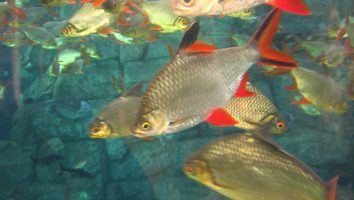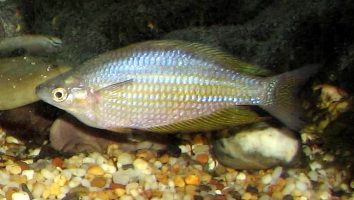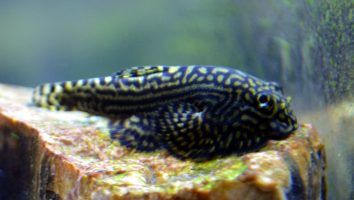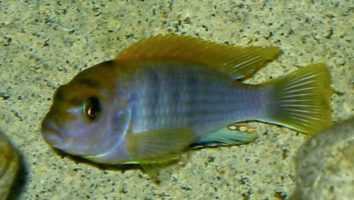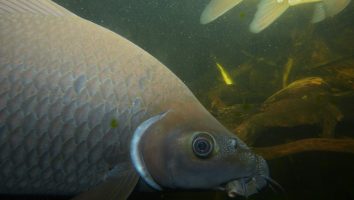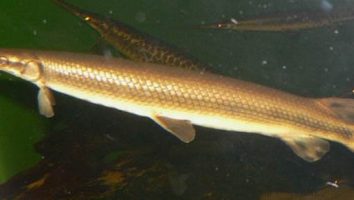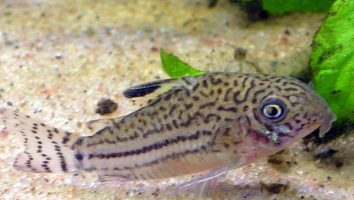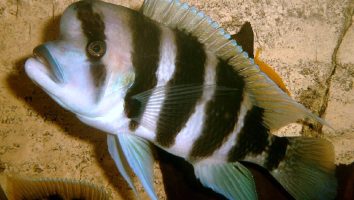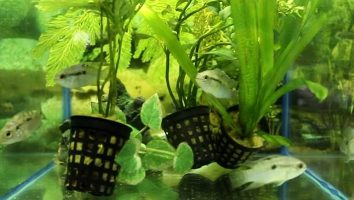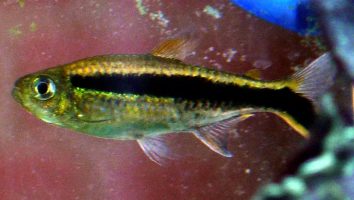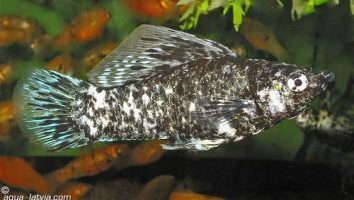The silver arowana (Osteoglossum bicirrhosum) is a stunning freshwater fish that is popular in the aquarium trade. They are native to the Amazon basin in South America, and can grow to be over 3 feet long!
Despite their size, they are relatively easy to care for as long as you have a large enough tank and some experience with fish keeping. In this guide, we will cover everything you need to know about silver arowana care.
Table of contents
Species overview
Silver arowanas (Osteoglossum bicirrhosum) are a type of freshwater fish that’s native to the Amazon Basin. They can be found in countries like Brazil, Peru, Colombia, and Ecuador.
Arowanas are unique fish because they have a very long and slender body that’s covered in large scales. They have a long dorsal fin that runs the length of their body and a forked tail.
Silver arowanas can grow to be quite large, with some individuals reaching up to 4 feet in length! They are a predatory fish and in the wild, they primarily eat smaller fish, crustaceans, and insects.
Due to their size and predatory nature, silver arowanas are not commonly kept as pets. However, they are sometimes kept in large aquariums or ponds.
Appearance
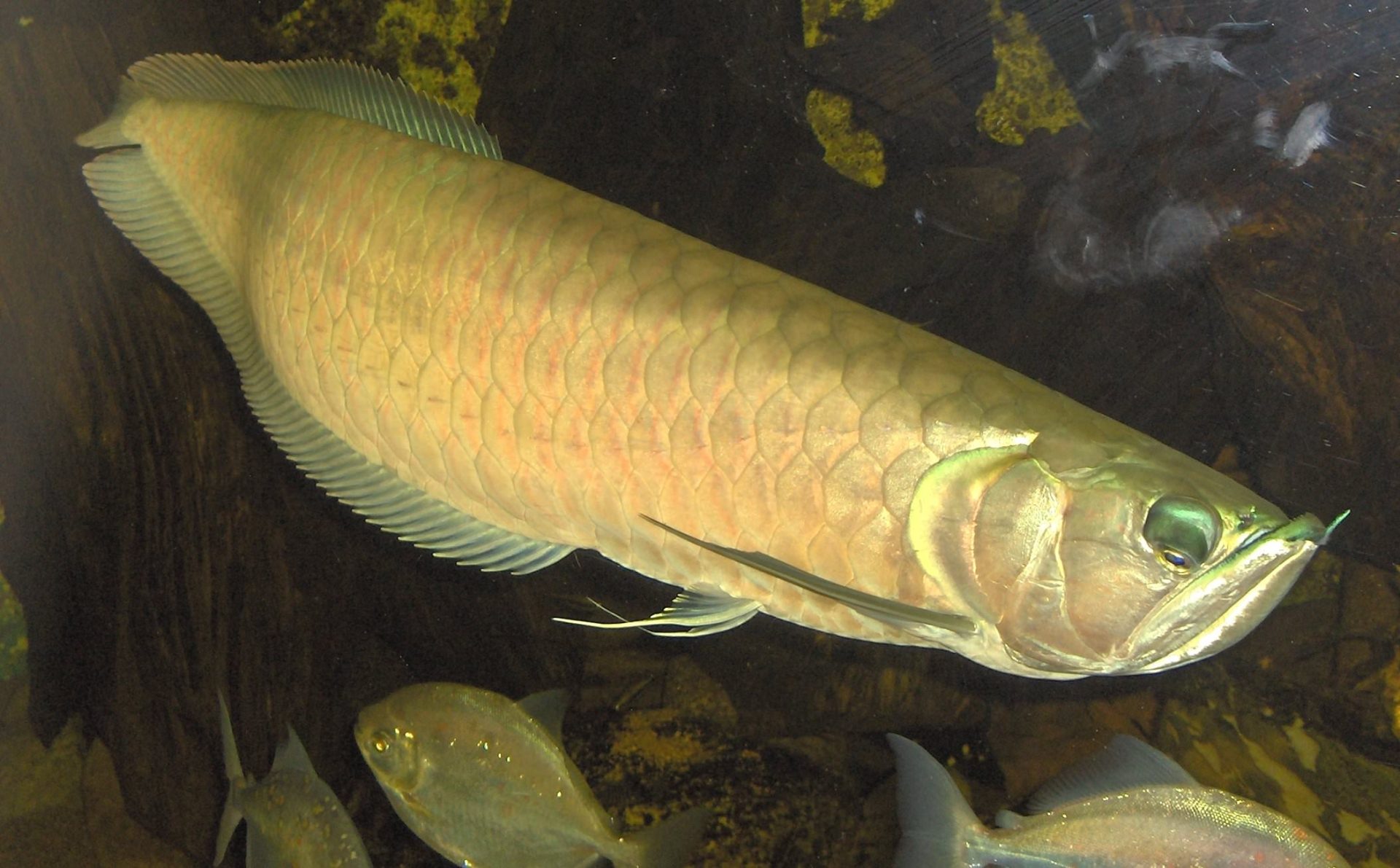
The most notable thing about the Silver Arowana is their size. These fish can grow to be over three feet long! They have a long and slender body that is covered in large, shiny scales.
The color of these fish is a beautiful silver. However, it’s not a uniform color. The silver is broken up by a series of black stripes that run vertically down the length of the fish.
The fins on the Silver Arowana are large and quite noticeable. The dorsal fin is tall and triangular. The anal fin is similar in shape but a bit smaller.
The pectoral fins are long and thin. They start about two-thirds of the way back on the body and extend to the end of the fish. The caudal fin is forked and fairly large.
The head of the Silver Arowana is long and narrow. They have large eyes that sit on the top of their head. Their mouths are quite large and filled with sharp teeth.
Lifespan
In the wild, a silver arowana’s lifespan averages around 12 years. But in captivity, where they’re better protected from predators and disease, they can live up to 20 years old.
Of course, there are a lot of variables that come into play. The quality of the water, the food they eat, and how often they’re handled can all impact their lifespan.
But if you take good care of them, you can expect your silver arowana to be around for a long time.
Size
Arowanas can grow to be quite large, with some specimens reaching up to 4 feet in length. The average size of a silver arowana, however, is between 2 and 3 feet.
Tank
Tank Size
The recommended minimum tank size for silver arowana is 125 gallons. If you want to keep more than one fish, you will need to increase the size of the tank accordingly. For each additional fish, you will need to add at least 50 gallons.
As with most fish, the larger the tank, the better. Larger tanks provide more stability and allow for a greater margin of error.
Water Parameters
Silver Arowana are a tropical freshwater fish that come from slow moving rivers and still waters in South America. Because of this, they are used to water that is warm and has a neutral to slightly acidic pH.
In the wild, Silver Arowana can grow to be over 3 feet long. But, in captivity, they typically only grow to be 2-3 feet in length.
Silver Arowana are not a community fish. They are known to be aggressive and will eat anything that they can fit in their mouth.
It’s best to keep them in a tank by themselves or with other fish that are too large to be considered food.
When setting up a tank for a Silver Arowana, it’s important to keep the following water parameters in mind.
- Water Temperature: 75 to 86 degrees Fahrenheit
- pH Levels: 6.5 to 7.5
- Water Hardness: 4 to 8 dGH
- Alkalinity Levels: 4 to 8 dKH
What To Put In Their Tank
Silver Arowanas are a bit of a unique fish when it comes to their habitat. They come from slow moving rivers and flooded forests in South America.
This means that they’re used to a lot of cover and hiding spots. When setting up their tank you’ll want to replicate this as much as possible.
We recommend using a dark substrate to start. This will help the fish feel more comfortable and make them less visible to predators.
From there, you can add in some driftwood and plants. Silver Arowanas love to hide, so the more hiding spots you can provide the better.
Caves and rocks can also be used, but make sure they’re big enough that the fish can’t get stuck.
It’s also important to note that these fish can get pretty big. An adult Silver Arowana can reach lengths of over 4 feet, so you’ll need a tank that can accommodate them.
Common Diseases
The silver arowana is a freshwater fish that is native to South America. These fish are not immune to disease, and there are a few that are particularly common in this species.
One of the most common diseases in silver arowanas is a condition called “hole in the head”. This is a disease that is caused by poor water quality and the presence of activated carbon in the tank.
This disease presents itself as one or two pits/holes in the skin of your fish’s head. While it’s almost always curable (fixing your water quality and removing activated carbon is usually all you need to do), it will usually leave some scarring on your poor fish!
The other disease that silver arowanas are prone to is ich. This is a very common disease that affects freshwater fish of all kinds, and silver arowanas are no exception.
This disease presents itself as white spots on the body, fins, and gills of your fish. We won’t do a full ich treatment guide here (there are plenty of those online) but it’s something you need to take very seriously if it affects your fish.
Behavior & Temperament
Silver arowanas are beautiful, but they’re not the easiest fish to keep. They’re very active and require a lot of space to move around. A 55-gallon tank is the bare minimum, but we recommend going up to a 125-gallon tank if you can. The larger the better.
You also need to be careful about the fish you put in with a silver arowana. These fish are known to be aggressive, and they will eat anything that fits in their mouth. That includes other fish, so be careful about who you put in the tank with them.
Other than that, silver arowanas are relatively low-maintenance. They’re not picky eaters and will eat just about anything you put in the tank. They’re also not too fussy about water conditions, as long as the water is clean.
Tank Mates
The silver arowana is a beautiful freshwater fish that’s native to the Amazon basin.
This fish is a member of the arowana family, which is a group of freshwater bony fish that are known for their long bodies and large scales.
The silver arowana is a popular aquarium fish because of its iridescent silver coloration.
This fish can grow to be quite large, so it’s important to choose tank mates that won’t be eaten or outcompeted for food.
Some good silver arowana tank mates include:
- Plecostomus
- Tetras
- Angelfish
- Rainbowfish
- Gouramis
- Danios
- Knife fish
Breeding
Silver Arowanas are one of the most difficult fish to breed in captivity. In the wild, they lay their eggs in rivers and rely on the currents to carry them to safety. This is impossible to replicate in the home aquarium.
For that reason, most Silver Arowanas that are bred in captivity are done so by commercial breeders. If you’re determined to breed them yourself, be prepared for a challenge.
The first step is to set up a breeding tank. It should be at least 50 gallons and filled with soft, slightly acidic water. You’ll also need to add a lot of hiding places.
Arowanas are nervous fish and need plenty of places to feel safe. Driftwood, caves, and plants are all good options.
Once the tank is set up, add a pair of adult fish. It’s best to wait until they’re at least a year old. Older fish are more likely to spawn.
You’ll need to do a lot of trial and error to get the water conditions just right. The temperature should be between 77 and 82 degrees Fahrenheit. The pH should be between 6.5 and 7.0. Water hardness should be between 5 and 10 dGH.
When the water is just right, the female will lay her eggs on a flat surface. The male will then fertilize them.
You’ll need to remove the adults at this point. They will eat the eggs if given the chance.
Eggs usually hatch within two weeks. The fry are very small and need to be fed live foods. Baby brine shrimp and bloodworms are good options.
As they grow, you can slowly introduce them to pellets and flakes.
Conclusion
The silver arowana is a beautiful and unique fish that is sure to make a statement in your aquarium. They are relatively easy to care for, but there are a few things you need to be aware of before you get one.
Namely, their large size and potential for jumping make them a less than ideal choice for smaller tanks or homes with young children or pets.
Other than that, we think they make an excellent addition to any freshwater aquarium!

